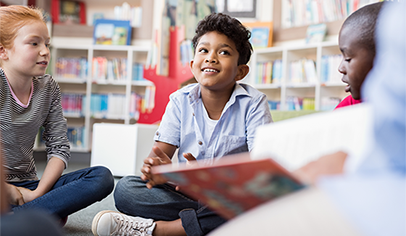Creating a welcoming, inclusive community in the classroom is one of the most important duties of a teacher. When students feel comfortable in the classroom, they can increase their grades, develop stronger social-emotional skills, and learn to be better friends. Here are tips and tricks for making sure every student feels welcome in your classroom!
Have a diverse classroom library
Authors of every background should be included on your shelf. Representation is important, especially to young students. It helps shape individual identity, teach tolerance and understanding, and makes us feel less alone. Books are one of the best ways to incorporate essential representation into your classroom, as it also helps your students further develop their reading skills!
“I wish my teacher knew…”
A writing prompt allowing students to anonymously tell you how they feel is a great way to have their needs heard. Some students may say lessons go too quickly, others may express difficulty at home, and some could simply want to tell you their favorite color. No matter the outcome, it’s an opportunity for your students to bring your attention to something they may not otherwise feel comfortable saying out loud.
Highlight personal progress in the classroom
Students often compare themselves to their peers and forget that they’re on their own academic journey. Remind them that learning means doing things wrong sometimes! While you’re helping your students, point out areas they’ve improved in by saying things like, “you didn’t get this last time, but it looks like you’re more comfortable with it now” to show that you notice their growth. You could even do weekly shoutouts to highlight your students’ strengths and the things they did well that week.
Welcome your students with a classroom objective
On the first few days of school, make your mission statement clear. Tell your students that inclusion can only be fully achieved with their help–kindness, understanding, and empathy should be at the core of everything you do as a class. In addition, getting to know your students and allowing them to get to know you is one of the best things you can do to make them feel comfortable and safe in your classroom.
Practice social-emotional learning
Social-emotional learning focuses on being in tune with oneself and others around us. By building empathy and understanding through various exercises and activities, students will be better equipped to navigate stressful situations, whether it’s failing a test or having an argument with a friend.
Set a goal at the beginning of the month
At the beginning of each month, tell your students what the goal is for the next few weeks. For example, the goal for October could be to be a good friend. Have your students write down one way they think they could be a good friend that month and hang up everyone’s ideas on the bulletin board. Throughout the month, remind them of this collective goal. Finally, at the end of the month, re-visit the goal and have your students write one or more ways they were a good friend that month.




